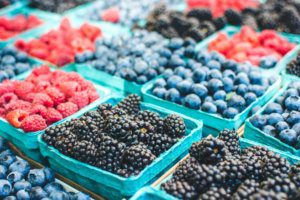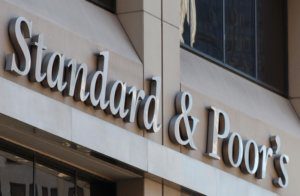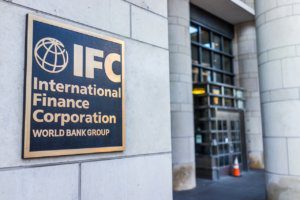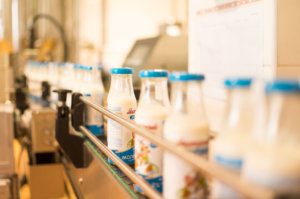
Ukrainian insurance companies that are members of the League of Insurance Organizations of Ukraine (LIOU), specializing in risk insurance and participating in the Open Insurance project, in January and February 2018 collected UAH 1.7 billion of insurance premiums, according to the LIOU website. The largest share in the structure of gross insurance premiums is that of voluntary property insurance with UAH 1 billion (60%), voluntary personal insurance (excluding life insurance) with UAH 400 million (21.7%) and non-government compulsory insurance with UAH 200 million (14.3%). Gross insurance premiums for voluntary insurance in January-February 2018 amounted to UAH 100 million (4%).
Gross insurance claim fee payments over the period amounted to UAH 500 million. The largest share in the structure of gross insurance payments was that of voluntary property insurance with UAH 200 million (40.3%), voluntary personal insurance (except for life insurance) with UAH 200 million (34.7%), non-government compulsory insurance with UAH 100 million (24.2%) and voluntary responsibly insurance with UAH 40 million (0.7%).
LIOU also analyzed voluntary car insurance (KASKO), obligatory insurance of civil liability of vehicle owners (OSAGO) and voluntary medical insurance.
KASKO premiums of the Open Insurance project participants totaled UAH 289.2 million in January-February 2018. Gross payments in claims reached UAH 180.3 million. The level of settling the payments was 62.3%.
As for voluntary medical insurance, premiums amounted to UAH 272 million and gross payments in claims – UAH 162 million. The level of settling the payments was 59.6%.
OSAGO premiums reached UAH 156.4 million and payments in claims – UAH 110.6 million. The level of settling the payments was 70.7%.
The insurance companies participating in the Open Insurance project are Azinco, Alfa Insurance, Arsenal Insurance, ViDi Insurance, Globus, Euroins, Interexpress, Inter-plus, Naftogazstrakh, NIKO Insurance, PZU Ukraine, Providna, PRO100-Strakhuvannia, Raritet, Skarbnytsia, Ukrfinstrakh, UNIQA and USI.
The Open Insurance project was founded by the League of Insurance Organizations of Ukraine in 2008 with the aim of improving the standards for disclosing information on the activities of insurance market participants, publicly announcing financial indicators, observing the policy of transparent activities and access to information.

The cost of exports of fruit and berries from Ukraine totaled $57 million in January-March 2018, which is 68% more than a year ago. According to the Ukrsadprom association, the key exported fruit were walnuts ($42 million), frozen berries ($10 million), apples and pears ($5 million). “Out of these groups of fruit and berries only for frozen berries the volume in kind and in cost declined. The volume of walnuts exported from Ukraine grew from 7,000 to 13,000 tonnes, and apples and pears from 6,000 to 14,000 tonnes,” the association said.
Ukrainian fruit and berries are of greatest demand in the EU countries (60% of revenue of Ukrainian exporters).
Ukrainian apples are mainly sold in the CIS and EU, in particular, Belarus, Moldova, Sweden (85% of the cost of their exports). Average export price of apples this year exceeded $320 per tonne.
“Major purchases of fruits and berries were carried out by France in the amount of $6.9 million, Turkey – $6.5 million, Poland – $4 million, Belarus – $3.7 million, Greece – $3.5 million, Germany – $2.8 million and the Netherlands – $2.7 million,” Ukrsadprom said.
At the same time, imports of fruit and berry products in Ukraine in January-March 2018 amounted to $143 million.
According to the report, it is mainly formed of exotic fruits (citrus fruits, bananas and other fruit). If one takes into account only traditional fruits and berries for Ukraine, the total foreign trade surplus was $40 million. At the same time, the association pointed out a surplus in the trade in pome fruits, which in recent years has been negative.

S&P Global Ratings forecasts that growth in Ukraine is set to accelerate further to 3.1% in 2018, and through to 2021, the agency expects average real GDP growth of about 2.9%, S&P said in a report affirming the country’s ratings issued on April 20. In the previous report dated November 10, 2017, S&P expected that GDP this year would grow by 2.6% with the acceleration to 3% and 3.2% in 2019 and 2020 respectively. S&P said that economic recovery continues to be driven by strengthening domestic demand, high commodity prices, and the economy’s ability to quickly adapt to the Donbas trade blockade. Growth drivers in the Ukrainian economy will remain broadly unchanged, with domestic demand as the main contributor.
Notwithstanding macroeconomic improvements, Ukrainian per capita wealth levels remain low.
“Despite two consecutive years of growth, per capita GDP ($2,600 in 2017) is still only at 67% of its pre-crisis wealth levels in 2013 and the second-lowest in Europe and the Commonwealth of Independent States after Tajikistan,” S&P said.
According to S&P, low income levels also explain high levels of net emigration. Over one million Ukrainians worked in Poland last year, with several hundreds of thousands in other neighboring countries.
“There are reports that this has caused shortages of qualified labor in western Ukraine, for instance, where a successful automotive industry cluster has been established over the past few years,” S&P said.
S&P also reviewed expectations for the hryvhia exchange rate for year-end: from UAH 27.3/$1 to UAH 29.5/$1. In addition, if earlier the agency expected that at the end of 2019 and 2020 the hryvnia exchange rate would remain stable at UAH 27.5/$1, now it expects that it would weaken by the end of next year to UAH 30.5/$1 with further strengthening to UAH 29.8/$1 by the end of 2020 and UAH 28.8/$1 by the end of 2021.
“Over our 2018-2021 forecast horizon, we still expect slightly higher current account deficits averaging 2.7% of GDP. Strong import demand–due to the domestically driven economy, volatile commodity prices, and risks to external trade from rising protectionism–could underpin these higher deficits,” S&P said.
As for inflation, the agency slightly worsened it for 2018 – from 8.7% to 8.9%, and improved for 2019 and 2020 – from 8% and 7.5% to 7.5% and 7% respectively.
“Given our forecast of continued deprecation pressures on the Ukrainian hryvnia, which pushes up import prices and inflationary pressures, especially from food prices, we forecast that inflationary pressures will persist over the medium term, though inflation will move closer to the NBU’s target of 6% plus/minus 2% in 2018,” the S&P analysts said.
S&P pointed out efforts of the NBU to curb inflation: the NBU continues to fight inflation, with four successive key policy rate hikes to 17% over the past six months.
Ukrainian exporters frequently hit export quotas early in the year. Moreover, meat exports, especially poultry, to the EU have an inflationary impact complicating the NBU’s task of reducing price inflation within its target band, S&P said.

Ukraine, the International Finance Corporation (IFC), the European Union and Germany have signed an agreement on the establishment of a fund to improve energy efficiency in Ukraine, the Ukrainian Finance Ministry has reported on its website. “In accordance with the agreement, up to EUR 53 million of financing provided by the EU and Germany will be under the management of IFC at the initial stage,” the Finance Ministry said. The multi-donor fund with the Ukrainian Energy Efficiency Fund will jointly finance energy efficiency projects in apartment buildings in Ukraine and provide expert support for the development of the market, the Finance Ministry said.
According to Finance Minister Oleksandr Danyliuk, the project will contribute to the creation of about 75,000 new jobs for engineers, builders and workers in the energy sector.

The Milk Alliance Group preliminarily plans to boost investment by over 20% in 2018 compared with 2017, to UAH 148 million. “Last year, we spent UAH 122 million on capital investments and the development of our enterprises. This year we planned UAH 148 million, but I see that we will spend about UAH 170 million. We have not yet invested in line with the capital investment plan, since the appetite comes with eating Chairman of the Supervisory Board of the Group Serhiy Vovchenko told reporters. Total capital investments of the group since 2012 have amounted to UAH 485 million.
According to the head of the council, in the second half of 2018 a new line will be launched at the Bashtanka Cheese Factory.
“Under the order of the Arab countries, we have started making mozzarella, which is subject to deep freezing, in blocks for their pizzerias. Now they also asked for grated frozen cheese and mozzarella. This equipment for slicing and shock freezing will cost about EUR 70,000. We have already ordered the equipment. It was made for us under an individual order,” Vovchenko said.
The chairman of the council said that the plans to expand the capacities at the Yagotyn butter factory and the plant for the production of the Yagotynske dlia Dietei brand.
“This year in Yagotyn we are completing the project of a high-tech warehouse. The construction stage was completed before the New Year. Now we are equipping it with process automation, storage and shipment units. We are talking about logistics processes. This is a multimillion-dollar investment. At the Yagotyn factory we will install a new cold room for butter this year,” Vovchenko said. He said that the group plans to increase the area of the Yagotynske dlia Dietei plant by 30% (village Zgurivka, Kyiv region). “We are increasing the plant’s area, first of all, to improve logistics. We intend to install one more ultrafiltration unit and an additional packaging line for “spoonful yogurts” where we can produce up to eight tonnes of products per day. The technical capacity will increase by 15%,” Vovchenko said.
He said that the group seeks to finish the project in Q3 2018. “We have stopped producing milk in glass bottles. It is expensive in production, and instead we launched another packaging line last year. Now we have milk and cream in packages for 200 grams. This year we are putting a new line ordered in Israel, for the Hopsy trademark, “spoonful yogurts” and desserts. It will cost us $1 million with installation,” he said.
Milk Alliance was established in June 2006 as a holding company with a charter capital of UAH 23.5 million and a balance sheet, 99.9% of which consists of long-term financial investments.